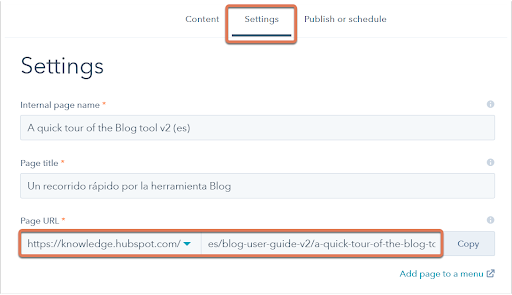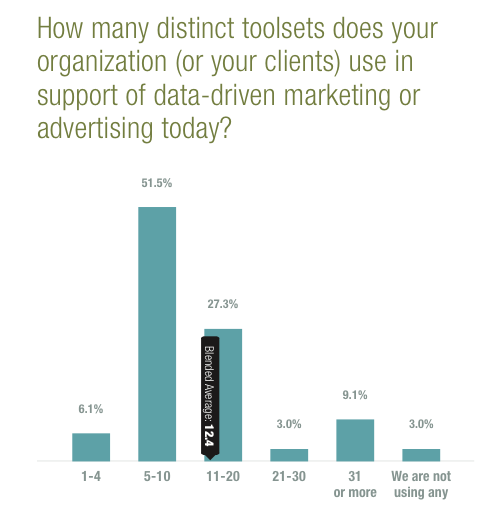7 SEO Truths For Every Marketing Manager 


As a marketing manager you know search engine optimisation is important, even critical, for your business.
But so are a hundred other things.
You simply don’t have the time to micromanage SEO. Chances are you have an SEO agency or consultant you trust to take care of it.
However, you still need to champion SEO in your organisation. You need to influence decision-makers, gain buy-in, win more budget and justify your investment.
For this to happen effectively, you need to understand not only how SEO works, but know the in-depth insights that will give your SEO campaigns the edge.
In this guide, we reveal some SEO truths that will ultimately help you do that.
1. SEO is the long game, but also the most profitable.
Here’s what you need to know about SEO – you’re in it for the long game.
The best way to think of SEO is like a freight train.
It takes a lot of time and effort to get going, but once you’ve got momentum, SEO can carry your business far.
How long are we talking exactly?
That’s the million-dollar question.
The answer?
There’s no one-size-fits-all, but we can say from experience that most businesses see an uplift in results from 6 months.
But the real game-changing, high ROI results come through maturing a campaign for at least 8-12 months.
That’s when you’ve started to make more from SEO than you’re investing.
(Disclaimer: How quickly you see results completely depends on where you’re starting from and how competitive your industry is.)
This long-term thinking means making your business case to non-marketing people can be really hard. Especially when they see the fast results of short term channels, like pay per click (PPC) and social media advertising.
These channels can generate results almost instantly, so why not just invest your budget in them and forget about SEO?
There’s one very good reason:
SEO is one of the most profitable – if not THE most profitable – channels you can use.
Take a look at these SEO statistics:
- The average SEO campaign generates an ROI of 135%.
- More than 40% of online revenue comes from organic search traffic.
- Mobile search generates 73 billion phone calls per year, which are from people who have a high chance of converting.
- SEO leads have a 14.6% conversion rate, compared to only 1.7% for print advertising and other traditional methods.
- Organic search is responsible for 51% of all website traffic, compared to 10% from paid search, 5% from social media, and 34% from other sources. (BrightEdge)
- 82% of marketers report the effectiveness of SEO is on the rise, with 42% stating it’s increasing significantly. (MarketDive)
- 61% of marketers say improving SEO and growing organic presence is a top inbound marketing priority. (HubSpot)
So, how do you counter-balance the wait time for SEO results?
That leads us to the second thing you need to know about SEO…
2. Combining SEO and other channels will help you map long term growth.
Let’s talk channel integration.
According to Search Engine Land:
“Marketers who use a combination of organic SEO and PPC ads in their strategies see an average of 25% more clicks and 27% more profit than those who only use a single search engine marketing tactic.”
This is a critical point.
For some time now, marketers have realised that keeping their channels in silos is hurting, not helping, their results.
Smashing down the silos and integrating channels is recognised as best practice.
According to Teradata’s Data-Driven Marketing survey:
More than 80% of marketers believe marketing silos prevent them from having a comprehensive view of campaigns and customers across channels.
SEO is no exception.
The thing about SEO is that it works brilliantly with other digital channels.
The trick is to look at ways you can take advantage of each tactic’s different strengths and bring them together for incredible results.
Here are three ways to integrate tactics for SEO success.
A. SEO + SEM
The major reason to use SEO and search engine marketing (SEM) tactics at the same time is because they both work on different time scales.
If you want rapid results, paid search will deliver. You can have a paid search ad displayed to your target audience and driving traffic to your website within hours.
But SEO is all about long-term sustainable results for revenue growth.
So, one proven approach is to use PPC to drive traffic to your website fast, while building your SEO foundations for long-term brand awareness and revenue results.
Another way to use paid search and SEO together?
Use paid search as a testing ground for content, then apply learnings to your content strategy for better organic search visibility.
For example, before you update article headlines and meta descriptions across your site, you can use PPC ads to see which text copy delivers the best engagement scores.
The bottom line?
Stop thinking of SEO vs SEM and let them work their magic together.
B. SEO + Content Marketing
Did you know websites that include a blog typically have 434% more indexed pages than those that don’t? (Forbes)
Fact is, you can’t separate content and SEO. You can’t have one without the other. But you can optimise your content strategy and create content to drive outstanding SEO results.
For example, include more videos and images can positively impact your organic search results.
Including a video in a post increases organic traffic from search results by 157%.
Meanwhile…
Content with at least one image significantly outperforms content without any images in search engine results.
Then there’s your keyword research.
The best performing content is optimised for user intent. How do you make sure your content matches user intent?
By aligning with the most relevant and profitable search terms (both long tail and short tail). That’s where your SEO and content marketing really come together.
C. SEO + Social Media
Okay, social media doesn’t directly contribute to SEO. What we mean by this is social signals don’t directly help your website rank better on Google. They are not ranking factors.
BUT –
Social media does indirectly impact SEO performance. There is a definite correlation between where your site ranks in the SERPs and its number of social signals.
That’s because:
- Your social media content gets indexed by search engines.
- Social media helps you build authority.
- Social media helps you gain more shares, visibility and therefore more links for your content.
That’s why you need to integrate your SEO and social strategies.
3. Most platforms are fine for SEO until you want to go international.
Then, you’ll face different challenges for each. Often local SEO and international SEO can prove a different ball game.
We’ll cut to the chase. If you know global expansion is slated for within 3-5 years, you need to start budgeting for a website platform that accommodates international SEO.
Let’s break it down.
There are lots of ways to organise your content for international SEO, but our experience shows that, for most companies, the ideal site structure is subdirectories.
This is where your internationalised content is placed in a specific subdirectory of the root domain. So, you can use the main domain’s existing authority to boost the visibility of your international content as you expand.
If you are using a platform that doesn’t allow this, you’re going to hit some major hurdles when it comes to international SEO.
Look to platforms like HubSpot, which make it really easy to set up language code subdirectories for your blog or pages.

Source: HubSpot Academy
As the screenshot above shows, it’s as simple as going into Settings.
Magento is the primary enterprise ecommerce CMS capable of subdirectories, but there’s a high development cost involved.
On the other hand, Shopify and BigCommerce boast a simple set-up but can’t do subdirectories. This means you’d have to set up different ccTLDs or subdomains for each region.
As always, there are pros and cons to every endeavour – so early and extensive research is key.
4. Creating one source of truth is the most important thing for your SEO campaign.
Data is your business’s most powerful asset.
But if your data is split across lots of different platforms and systems, you’ll struggle to get the insights you need for SEO success.
On average, marketing departments use at least 12 marketing systems.

Source: HubSpot
How many are you using?
Count your email marketing software, CRM, Google Analytics, marketing automation software, project management tools, and more.
Now think about it. Even though you have the tools to collect data, how easy is it to splice, dice and view your data to understand if and how your campaigns are making an impact?
Let’s look at an example.
When Google Analytics counts conversions, it doesn’t reconcile its information with Facebook or your email marketing software.
So, a consumer clicks on a Google search result, then a Facebook ad, then an email, before converting. All three marketing channels claim the conversion, which leads to an over-representation of the channel’s impact, or “double counting”.
As a result, you struggle to attribute revenue correctly and clearly see the influence each of your marketing channels has on a customer’s journey.
The solution?
You need access to a centralised system that offers a single source of truth.
Look to a tool like HubSpot that tracks every customer interaction from the first visit to ongoing advocacy.
This will give you visibility in a way that measures both direct conversions and assisted conversions.
5. Marketing automation helps you turn SEO leads into customers.
Spending on marketing automation tools is expected to reach $25.1 billion annually by 2023, according to Martech Today.
Why?
The reason is simple:
Digital marketing is a massive job and marketing automation tools make it easier to get the results you need, without investing more time and effort than you have.
One way to effectively take advantage of marketing automation tools is to turn SEO leads into customers.
For instance, the tool may score leads based how they found your website, how they engage with your website and brand across the internet. So, your sales and marketing teams can prioritise leads, respond appropriately, and increase the conversion rate.
Need proof?
- Companies that automate lead management see at least a 10% increase in revenue within 6-9 months. (Strategic IC, 2017)
- 79% of top-performing companies have been using marketing automation for at least 3 years. (Venture Harbour, 2017)
- And 2 out of 3 marketing leaders currently use a marketing automation platform. (Salesforce, 2017)
6. Schema markup is the hidden SEO opportunity your competition isn’t using.
If there’s one way to get the edge on your competition, it’s this:
Apply Schema.org markup to your site.
Schema markup is microdata that you put on your website to help search engines return more informative, detailed results to searchers (AKA a rich snippet).
But it’s one of the least utilised forms of SEO tactics. One study shows that less than one-third of Google’s search results include a rich snippet.
Yet, Schema markup is PROVEN to boost your site visibility in the SERPs and increase click-through rates.
So, if you’re not yet using Schema markup, it could be an easy way to get a leg up on your competition.
There’s a long list of things you can markup, including:
- Events
- Recipes
- Articles
- Business information
- Products and offers
If you don’t have an SEO agency to take care of it for you, use Google’s Structured Data Markup Helper. It offers a heap of free tools and resources for webmasters. Alternatively, if you have a WordPress site, you can use a plugin.
7. Ultimately, SEO is all about user experience
If user experience is not your number one priority, your SEO strategy will fail.
Everything you do with SEO should be for users first and foremost.
Whether it’s your site structure, content creation, link building, technical SEO, on-page SEO, every action you take needs to focus on improving the user experience.
Don’t worry about what this means for the search engines – their algorithms are designed to reward sites that provide a valuable and exceptional user experience.
It’s what Google wants.
And it’s what your users want too.
A staggering 88% of users are unlikely to return to a website after just one bad experience.
Naturally, this goes straight to your bottom line. In fact, companies with a highly effective user experience (UX) have increased revenue by a massive 37%, according to UXpassion.
How can you focus on user experience?
A. Make your site easy to navigate.
Intuitive site navigation makes it easy for search engines to crawl your site and your visitors to find what they want fast. The result is better visibility for search queries and more conversions.
B. Make it mobile friendly
Mobile users are 5X more likely to abandon a task if the site is not optimised for their device. If that’s not reason enough, Google uses mobile responsiveness as a ranking factor.
C. Speed up your site
Another ranking factor is your site’s speed and performance. Your page’s loading speed also directly impacts user experience. DoubleClick by Google found over 50% of mobile site visits were abandoned if a page took more than 3 seconds to load.
Test the speed of your websites using the free Google PageSpeed Insights tool.
D. Create high-quality content.
Aim to add value for users at each stage of their customer journey. Plus, high-quality content earns inbound links, which is a major ranking factor for Google and other search engines.
Over to you
At the end of the day, SEO will deliver real growth and revenue impact. You simply need to apply these proven truths to every single campaign.
What are the biggest SEO challenges you’re facing? What are the SEO essentials you’ve learnt along the way?
Avoid the common SEO mistakes and generate sustainable revenue results from your strategy. Explore the free A-Z SEO Guide and learn all the tried and true secrets from world-class SEO consultants and marketing minds.









